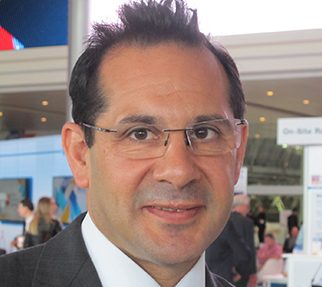
We now live in an unprecedented era of technological advances, which is eclipsing our ability to test new therapies at the pace of these advances and the natural history of most heart rhythm disorders themselves. Many clinical trials have to endure the risk of becoming “obsolete” as technology evolves; for example, the development of leadless pacing in parallel with the subcutaneous implantable cardioverter defibrillator (S-ICD) means hybrid technologies may surpass the publication of randomised controlled trial evidence from S-ICD vs. transvenous ICD alone in the PRAETORIAN trial five years from now. In the past, medical research was restricted to single individuals often working in isolation with slow dissemination of results to the medical community and often even slower translation. This culture stemmed from the isolation of physicians in the pre-antibiotic era of the 1940s. A physician would make a diagnosis on the basis of history, clinical examination and limited imaging and in the case of suspected infection perhaps undertake his/her own diagnostic testing eg. gram staining. In the contemporary era, pioneers formed the foundations of modern cardiology such as Werner Forssman with cardiac catheterisation, Paul Zoll with the cardiac pacemaker and Michel Mirowski with the ICD by working collaboratively in a cross-disciplinary manner with engineering being critical to these advances.
In modern electrophysiology, such multidisciplinary work is critical to medical advances being rapidly translated and targeted to the appropriate patient groups. Today, the electrophysiologist has to work closely in collaboration with both the cathlab and hospital including nurses, physiologists, radiologists and even more so with multiple teams in order to effectively evaluate new therapies in clinical trials.
One of the key challenges in this field is to ensure that data collected in such studies is undertaken transparently and stored in central repositories that have open-access. Such an approach has been common in the computational modelling field with open-source sharing of code for programming. This is being increasingly recognised by medical journals, international associations such as the European Heart Rhythm
Association (EHRA), regulatory bodies and government. It serves two purposes: (1) rapid dissemination of information; and (2) independent scrutinisation of data validity and integrity. This open access approach should also enable pooling of data for “virtual” clinical trials where multiple centres can share information enabling specific hypotheses or treatment strategies to be tested in a more cost-effective manner. This could enhance our ability to improve trial design and power clinical studies to facilitate more rapid advancements in the field, particularly in real-world populations.
Such a strategy is especially pertinent to post-marketing research where there may be a rapid uptake of a specific technology with a broad application across a wide spectrum of patients. Post-marketing surveillance is critical in ensuring the safe application of the technology akin to the “yellow card” system of drug-monitoring but also creates an opportunity to pool data and resources. The collection of agreed data sets between centres for registries with centralised resources to facilitate data collection and straightforward data entry could enable the conduct of virtual clinical trials based on retrospectively and prospectively collected data with less of the financial burden of randomised controlled trials. By their nature, clinical trials only have a limited time course and opportunities to evaluate long-term impacts are often missed as there simply are not the resources to enable ongoing data collection. Such registries could be supported by industry or academic institutions working in partnership as multicentre trials/registry collaborations to inform the field and optimise technology delivery as well as assess its real-world impact. Such opportunities are developing in the UK with the availability of electronic patient records in the NHS that enable greater granularity of specific patient cohorts and the coding of procedures. This means that clinical outcomes of procedures in stratified populations can be studied nationally across the NHS to measure impacts on hospitalisations, utilisation of healthcare resources and mortality.
We are privileged to reside in an era of tremendous innovation, and with the advent of detailed electronic health records, we now have the opportunity both to track the impact of these new therapies and the responsibility to ensure they are monitored carefully for the benefit of our patients in the long term. The challenge lies in how we change research culture to orchestrate, share and maintain this vital data collection both nationally and internationally.
Pier Lambiase is professor of Cardiology and consultant cardiologist at the UCL Institute of Cardiovascular Science and Barts Heart Centre in London, UK












